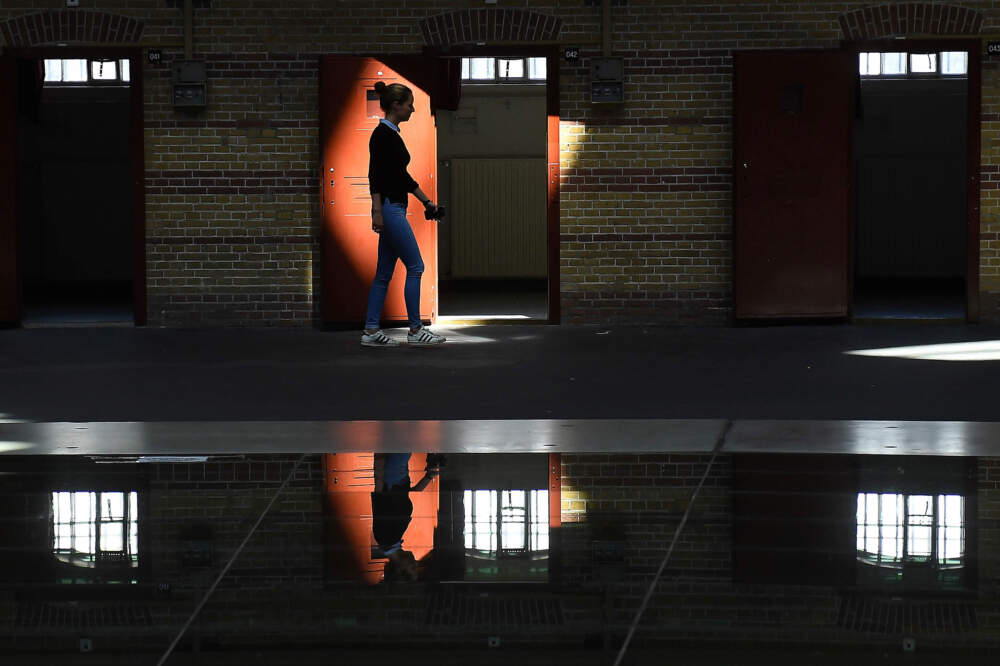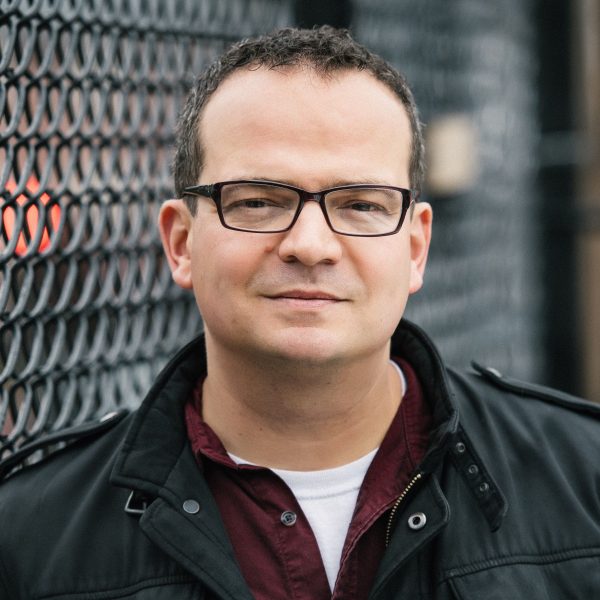Advertisement
Commentary
Behind the prison walls, I heard these women's stories

All I was allowed to carry into the women’s prison were my car keys and a photo ID. I placed my keys in a locker and exchanged my driver’s license for a visitor badge and an emergency alarm. The alarm was a walkie-talkie I attached to my belt.
I passed through the metal detectors and onto the grounds, past women in navy blue sweatsuits plodding down paved paths. Through the window of a brick building, I saw a group of them bent over desks in a classroom. Something about all this seemed familiar — but I didn’t have time to think about it.
I was here as a guest author at a writing class taught by a friend. While we waited for the students, my friend told me she just found out one of them got deported to Haiti. That meant there were nine left. I’m sorry to hear this, I said. What I thought was: three groups of three. This is how the teacher brain works. Also, it was easier to focus on the lesson than to imagine the life of that woman who had been deported, how she would feel when the plane lifted off the tarmac.
The first student to arrive walked confidently to the front of the room to introduce herself, while behind her another tried to disappear into the back, sliding a flimsy table as close to the window as possible. Soon all nine students arrived, ranging in age from their 20s to maybe their 50s, a wide range of cultures and identities, a tapestry of lives wearing the same blue sweatsuit.
I started by telling a mildly embarrassing account of my terrible first year as a middle school teacher in East Oakland. I made fun of myself for being a well-intentioned white boy with a ponytail who pushed a shopping cart full of books down the hallways. I told them how I failed every single day but kept at it, which is what I’ve been doing for the last 20 years in urban education, as a teacher and a school leader and now as a consultant.
They told stories about giving birth, and caring for parents with cancer, and running marathons.
Then each woman practiced telling a story from her own life. I walked around the room to listen and support. They told stories about giving birth, and caring for parents with cancer, and running marathons. They laughed and talked with their hands and nodded. At the end of class, volunteers shared their stories.
One woman — the student who had arrived first — told us about the day she landed in the United States from China, how she was served a gigantic plate of spaghetti and was horrified, convinced she had to finish the whole thing. Another woman told us about being the only Dominican student in a suburban high school, how she felt isolated and dropped out when she fell in with a bad boyfriend, how she was broke and too uncoordinated to get by as an exotic dancer and made some mistakes that ended with her in here, where she’s back in class trying to finish her education. All of us in the room leaned forward, listening.
“It’s funny, I see you every day, but I never knew any of that,” one of the other students, a thin middle-aged woman said.
At the end of the class, I thanked them for their courage and generosity, and then I left, glancing back through the little window in the door at these nine figures in sweatsuits, grown women held like high school kids waiting for the bell. And that’s when it hit me: the metal detectors and lockers and linoleum floors, the concrete and fluorescent lights, even the experience of wearing a walkie-talkie. This place reminded me of so many of the schools I had worked in over the years.
This is what the school-to-prison pipeline looks like.
These similarities are not accidental. In the majority-white schools where I was a student, there were no uniformed guards or security devices but these are standard practice in the schools where I’ve worked, which serve mostly low-income students of color. This is what the school-to-prison pipeline looks like.
The national data show students of color are more than twice as likely to miss class due to suspension than their white peers, and this disproportionate discipline leads directly to disproportionate incarceration. Disrupting this pipeline is the focus of my current work as a consultant, supporting districts and schools around the country on restorative practices and equitable discipline policies.
But as I crossed back through the grounds, I wasn’t thinking about policy. I was remembering the stories the women had shared. None of them talked about being in prison, about crime and punishment. They were not defined by their current circumstances, nor by whatever oppressive systems and hard luck and bad choices got them here.
I went back through the metal detectors and collected my car keys, and I was so seized by these stories that I got halfway home before I realized I’d forgotten my license. I drove back, entered the massive brick building with the last of the day’s light. The security guard recognized me. I was wondering if you would come back, she said. I did, I said. I will.
Weeks later, my friend sent me an essay by one of the students, inspired by the story she told that day. This was the woman who sat at the flimsy table by the window. I read this description of a girl being taught how to drive by her mother, when they lived in their last real home before they started moving around, before things began to spiral towards loss. This was such a deeply relatable moment of connection and longing and regret. This piece, and all the stories these women told, lift our shared humanity up to the light.
Of course, it will take more than telling stories to dismantle the school-to-prison pipeline. Addressing injustice requires long-term commitment and hard work. But listening to each other is a key first step. If acts of brutality begin with internal acts of dehumanization, then solutions must begin with acknowledgment of our shared humanity. In the meantime, my hope for the courageous women in this class is that a moment of owning their stories — and of being heard — felt like stepping towards freedom.
